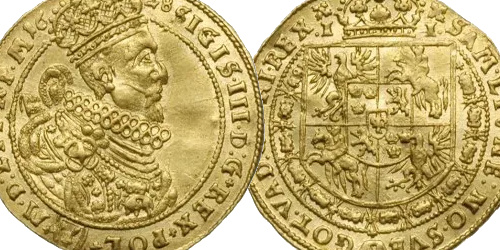Very rare forgery of FEIN, extremely similar to the original of Stefan Batory's Vilnius thaler from 1585, minted in silver. The coin was made by a well-known and respected forger of Polish coins, who, as Mańkowski writes, surpassed the famous MAJNERT in his skills. The stamps were handmade by the engraver and goldsmith FEIN on behalf of lawyer Hausmann, who was the initiator of the entire coin counterfeiting operation. These coins were introduced into collector circulation by the third gentleman, Zelman Igel, who introduced so many of these coins into circulation that while in Poland fake thalers were called Majnert, in Germany fake ducats were called Igel. Igel's forgeries found their way into the most outstanding 19th-century collections, including: to the Ossolineum, the Potocki collection, or Countess Izabella Staczyńska.
A unique item on the auction market. An excellent addition to any collection of coins of Royal Poland. A unique coin that will be a great addition to any collection. Not listed yet!
Plenty of mint bloom.
Obverse scratched.
Obverse: crowned half-figure of the ruler, long and narrow, left hand resting on the hilt of a sword, in the right a scepter
STEPHANVS DG REX POLO MD LIT
Reverse: crowned shield of the Republic of Poland, on the chest a shield with the Wilcze Zęby coat of arms, below it the Wieniawa coat of arms in a shield
MONETA NOVA RE GNI POLONIE XXXV
Diameter 41 mm, weight 27.24 g
Henryk Mańkowski in his book "Fałszywe monety polskie" writes about the presented thaler as follows: "Lithuanian thaler 1585. Czapski (no. 7233) states that it was probably the manufacturer of Fajna; Kostrzębski firmly claims the same. It is a faithful copy of Zagórski's drawing, which is not entirely accurate, struck with a very careful stamp , handmade. It does not match the original known to us in various small details. On the main page, the scepter on the original is crooked, on the reverse side it is straight in the original in the words VOL and LIVO the lower part, so that it looks almost like I, on the false L it is normal; the crown above the coats of arms has shaded bottoms instead of empty ones, as in the original. Taking into account that the piece is struck with a hand-cut stamp, we must admit that it is cool in the art of medallions. "surpassed Majnert's diligence."










